Sinica Podcast
01.07.11
China 2010—Year in Review
from Sinica Podcast
This week we take a look back at China in 2010, revisiting some of the biggest stories we covered and discussing a few we missed. With Kaiser Kuo hosting the discussion as usual, our guests in the studio include Sinica stalwarts and regulars Jeremy...
Reports
01.01.11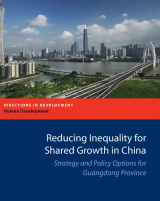
Reducing Inequality for Shared Growth in China: Strategy and Policy Options for Guangdong Province
World Bank
This report is the result of a partnership of the World Bank and the Guangdong provincial government to assess economic and regional inequality in Guangdong. It defines three major types of inequality: Absolute poverty, Inequality of Opportunity,...
Reports
12.01.10
Can China’s Rural Elderly Count on Support from Adult Children? Implications of Rural to Urban Migration
World Bank
Support from the family continues to be an important source of support for the rural elderly, particularly the rural elderly over seventy years of age. Decline in likelihood of co-residence with, or in close proximity to, adult children raises the...
Reports
12.01.10
The Role of Trade Costs in Global Production Networks: Evidence from China’s Processing Trade Regime
World Bank
This paper uses data from China's processing trade regime to analyze the role of trade costs on trade within global production networks (GPNs). Under this regime, firms are granted duty exemptions on imported inputs as long as they are used...
Reports
12.01.10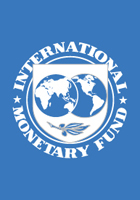
Income Uncertainty and Household Savings in China
International Monetary Fund (IMF)
China’s household saving rate has increased markedly since the mid-1990s and the age-savings profile has become U-shaped. The authors find that rising income uncertainty and pension reforms help explain both of these phenomena. Using a panel of...
Reports
12.01.10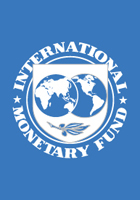
Transforming China: Insights from the Japanese Experience of the 1980s
Sara Segal-Williams
International Monetary Fund (IMF)
China is poised on the brink of a transition to a service-based economy. The Japanese experience of the 1980s provides several insights about the way to manage such a transition and the downsides to avoid. In particular Japan offers useful insights...
Reports
11.05.10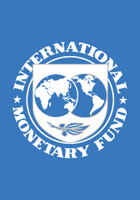
Staff Report of the People’s Republic of China—Hong Kong Special Administrative Region: 2010 Article IV Consultation Discussions
International Monetary Fund (IMF)
Two potent forces continue to influence Hong Kong SAR's prospects: the unprecedented monetary policy easing in the United States and the solid domestic recovery, in part driven by spillovers from the Mainland. While the substantial expansion of...
Reports
11.01.10
On the Road to Prosperity? The Economic Geography of China’s National Expressway Network
World Bank
Over the past two decades, China has embarked on an ambitious program of expressway network expansion. By facilitating market integration, this program aims both to promote efficiency at the national level and to contribute to the catch-up of...
Reports
11.01.10
Did Higher Inequality Impede Growth in Rural China?
World Bank
Since the start of economic reform in the early 1980s, China has experienced plenty of growth and inequality; per capita income has grown nearly 8 percent annually, while the Gini coefficient rose from 0.28 to 0.39. Using a rich longitudinal survey...
Sinica Podcast
09.24.10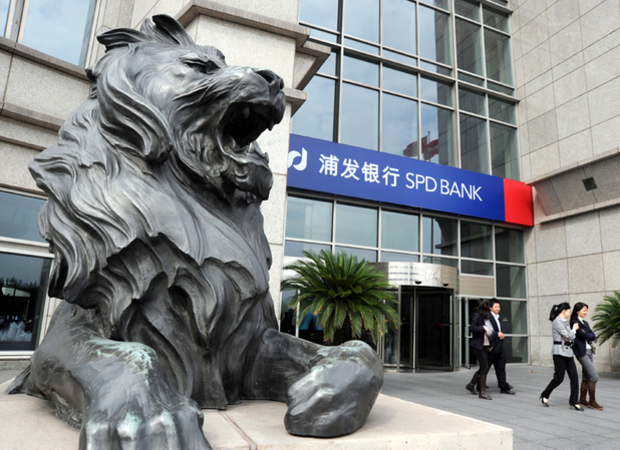
Attack of the China Bears
from Sinica Podcast
As the American economy teeters on the brink of a double-dip recession, “China Bear” sightings have increased significantly. A loosely-knit group of economists and critics who see storm clouds looming over the Chinese economy, China Bears have a...
Reports
09.23.10
China’s Sovereign Wealth Fund: Developments and Policy Implications
Peony Lui
Congressional Research Service
China’s ruling executive body, the State Council, established the China Investment Corporation (CIC), a sovereign wealth fund, in September 2007 to invest $200 billion of China’s then $1.4 trillion in foreign exchange reserves. As with other...
Reports
09.21.10
China’s Steel Industry and Its Impact on the United States: Issues for Congress
Peony Lui
Congressional Research Service
China’s steel industry has grown significantly since the mid-1990s. China is now the world’s largest steelmaker and steel consumer. The majority of Chinese steel has been used to meet domestic demand in China. However, as its steel production...
Reports
09.01.10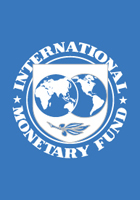
Price Dynamics in China
International Monetary Fund (IMF)
Chinese inflation, particularly non-food inflation, has been surprisingly modest in recent years. The author finds that supply factors, including those captured through upstream foreign commodity and producer prices, have been important drivers of...
Sinica Podcast
08.06.10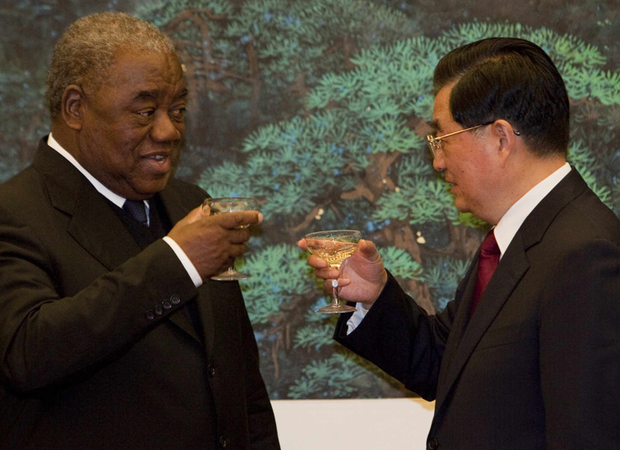
China in Africa
from Sinica Podcast
The world is abuzz over a number of recent large-scale infrastructure-for-resources deals China has signed in Africa. While some observers see these agreements as a force for good in local economic development, others have gone so far as to call the...
Reports
07.14.10
China and the United States - A Comparison of Green Energy Programs and Policies
Peony Lui
Congressional Research Service
China has experienced tremendous economic growth over the last three decades, with an annual average increase in gross domestic product of 9.8 percent during that period. This has led to an increasing demand for energy, spurring China to add an...
Reports
07.01.10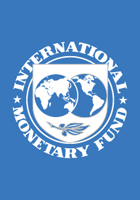
People’s Republic of China: 2010 Article IV Consultation-Staff Report; Staff Statement; Public Information Notice on the Executive Board Discussion
International Monetary Fund (IMF)
This is the staff report for the 2010 Article IV consultation, prepared by a staff team of the IMF, following discussions that ended on July 1, 2010, with the officials of the People's Republic of China on economic developments and policies...
Reports
06.01.10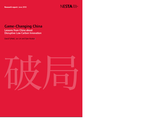
Game-Changing China: Lessons from China about Disruptive Low Carbon Innovation
Nesta
Big hydro, big solar photovoltaic, and big wind—these are the usual focus of accounts of low-carbon technologies in China. But a very different type of innovation—ranging from a farm cooperative in Yunnan, to woodchip and corn pellets in rural...
Reports
05.05.10
Restructuring Paper on a Proposed Project Restructuring of Jiangxi Integrated Agricultural Modernization Project
Sara Segal-Williams
World Bank
The development objective of the Jiangxi Integrated Agricultural Modernization Project (JIAMP) for China is to improve the livelihood of the farmers in the project areas through establishment of integrated, sustainable, and market-driven...
Reports
05.04.10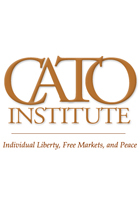
Manufacturing Discord
Cato Institute
Frictions in the U.S.-China relationship are nothing new, but they have intensified in recent months. This paper examines the U.S.-China economic relationship and some of its high-profile sources of friction, distills the substance from the hype,...
Reports
04.15.10
East Asian Regional Architecture: New Economic and Security Arrangements and U.S. Policy
Peony Lui
Congressional Research Service
The global financial crisis, the end of the Cold War, the rise of China, globalization, free trade agreements, the war on terror, and an institutional approach to keeping the peace are causing dramatic shifts in relationships among countries in East...
Reports
04.01.10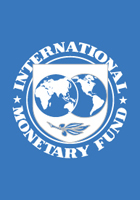
Determinants of China’s Private Consumption: An International Perspective
International Monetary Fund (IMF)
Gauges the key determinants of China's private consumption in relation to GDP using data on the Chinese economy and evidence from other countries' experiences. The results suggest there is nothing "special" about consumption in...
Reports
03.24.10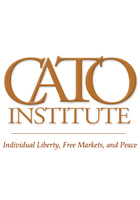
Appreciate This: Chinese Currency Rise Will Have a Negligible Effect on the Trade Deficit
Cato Institute
This report argues that the Obama administration and Congress should consider whether RMB appreciation would even lead to the outcomes they desire—namely, more balanced trade. The evidence does not support their objective. Although the short-term...
Reports
03.01.10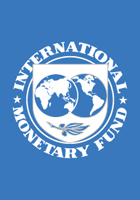
Public Expenditures on Social Programs and Household Consumption in China
International Monetary Fund (IMF)
This paper argues that increasing government social expenditures can make a substantive contribution to increasing household consumption in China. The paper first undertakes an empirical study of the relationship between the savings rate and social...
Reports
02.04.10
The 2009 Asia Pacific Economic Cooperation (APEC) Meetings and U.S. Trade Policy in Asia
Peony Lui
Congressional Research Service
Congress and the Executive Branch have historically identified the Asia Pacific Economic Cooperation forum (APEC) as potentially important in the promotion of liberalized international trade and investment in Asia, and possibly the rest of the world...
Reports
01.01.10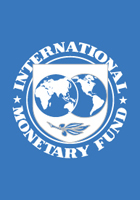
China: Does Government Health and Education Spending Boost Consumption?
International Monetary Fund (IMF)
Consumption in China is unusually low and has continued to decline as a share of GDP over the past decade. A key policy question is how to reverse this trend, and rebalance growth away from reliance on exports and investment and toward consumption...
Reports
12.11.09
China’s Economic Conditions
Peony Lui
Congressional Research Service
Since the initiation of economic reforms and trade liberalization thirty years ago, China has been one of the world’s fastest-growing economies and has emerged as a major economic and trade power. The combination of large trade surpluses, FDI flows...
Reports
12.07.09
China’s Currency: A Summary of the Economic Issues
Peony Lui
Congressional Research Service
Some Members of Congress charge that China’s policy of accumulating foreign reserves (especially U.S. dollars) to influence the value of its currency constitutes a form of currency manipulation intended to make its exports cheaper and imports into...
Reports
11.25.09
China’s Assistance and Government-Sponsored Investment Activities in Africa, Latin America, and Southeast Asia
Peony Lui
Congressional Research Service
In recent years, the People’s Republic of China (PRC) has bolstered its diplomatic presence and garnered international goodwill in the developing world through financing infrastructure and natural resource development projects, assisting in the...
Reports
11.20.09
China-U.S. Relations: Current Issues and Implications for U.S. Policy
Peony Lui
Congressional Research Service
The bilateral relationship between the U.S. and the People’s Republic of China (PRC) is vitally important, touching on a wide range of areas including, among others, economic policy, security, foreign relations, and human rights. U.S. interests with...
The NYRB China Archive
11.19.09China: The Fragile Superpower
from New York Review of Books
Some China watchers believe that China’s dramatically rising prosperity will inevitably make the country more open and democratic. President Barack Obama’s highly-scripted trip this week provided little to support that claim. As The Washington Post...
Reports
11.16.09
The Rise of China’s Auto Industry and Its Impact on the U.S. Motor Vehicle Industry
Peony Lui
Congressional Research Service
The automobile industry, a key sector in China’s industrialization and modernization efforts, has been developing rapidly since the 1990s. In recent years, China has become the world’s fastest growing automotive producer. Annual vehicle output has...
Reports
11.01.09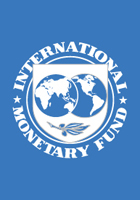
Macroeconomic Implications for Hong Kong SAR of Accommodative U.S. Monetary Policy
International Monetary Fund (IMF)
This paper discusses the potential macroeconomic implications for Hong Kong SAR of accommodative monetary policy in the United States. It shows, through model simulations, that a resumption of the credit channel in Hong Kong SAR has the potential to...
Reports
11.01.09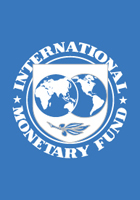
Governance and Fund Management in the Chinese Pension System
International Monetary Fund (IMF)
The Chinese pension system is highly fragmented and decentralized, with governance standards, pension fund management practices, their regulation and supervision varying considerably both across the funded components of the Chinese pension system...
The NYRB China Archive
10.29.09China’s Boom: The Dark Side in Photos
from New York Review of Books
I have seen some woeful scenes of industrial apocalypse and pollution in my travels throughout China, but there are very few images that remain vividly in my mind. This is why the photographs of Lu Guang are so important. A fearless documentary...
Reports
09.01.09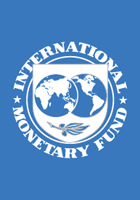
What’s the Damage? Medium-term Output Dynamics After Banking Crises
International Monetary Fund (IMF)
This paper investigates the medium-term behavior of output following banking crises, and its association with pre- and post-crisis conditions and policies. The authors find that output tends to be depressed substantially following banking crises,...
Reports
09.01.09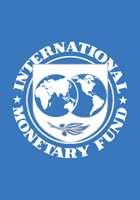
What Drives China's Interbank Market?
Sara Segal-Williams
International Monetary Fund (IMF)
Interest rates in China comprise a mix of both market determined interest rates (interbank rates and bond yields), and regulated interest rates (lending and deposit rates), reflecting China's gradual process of interest rate liberalization. We...
Reports
07.16.09
East Asia’s Foreign Exchange Rate Policies
Peony Lui
Congressional Research Service
Financial authorities in East Asia have adopted a variety of foreign exchange rate policies, ranging from Hong Kong’s currency board system which links the Hong Kong dollar to the U.S. dollar, to the “independently floating” exchange rates of Japan...
Reports
07.01.09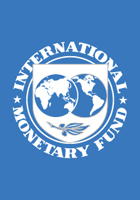
Broad Money Demand and Asset Substitution in China
International Monetary Fund (IMF)
Recent changes to China's financial system, in particular ongoing interest rate liberalization, gradual movement toward a more flexible exchange rate regime, and rapid development of capital markets, have changed substantially the environment...
Reports
06.17.09
Report on the Tri-Provincial and Hubei-Xiaogan-Xiangfan Highway Projects
World Bank
This is a report on the performance of two highway projects in China which were financed by a loan from the World Bank. The Tri-Provincial Highway Project, which links Gansu, Ningxi, and Inner Mongolia, and the Hubei-Xiaogan-Xiangfan Highway Project...
Reports
06.03.09
China and the Global Financial Crisis: Implications for the United States
Peony Lui
Congressional Research Service
Over the past several years, China has enjoyed one of the world’s fastest growing economies and has been a major contributor to world economic growth. However, the current global financial crisis threatens to significantly slow China’s economy...
Reports
05.01.09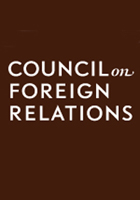
China’s $1.5 Trillion Bet: Understanding China’s External Portfolio
He Jianan
Council on Foreign Relations
China is now by far the United States’ largest creditor. Its treasury portfolio recently surpassed that of Japan’s, and it has long held more agency (Fannie Mae, Freddie Mac) bonds than any other country. Never before has a nation as poor as China...
Reports
04.02.09
Taiwan-U.S. Relations: Developments and Policy Implications
Peony Lui
Congressional Research Service
Policy toward and support for Taiwan are a key element in U.S. relations with the People’s Republic of China (PRC) and an important component of U.S. policy in Asia. Recently, pessimistic observers see growing PRC-Taiwan ties eroding U.S. influence...
Reports
03.31.09
Asia Pacfic Economic Cooperation (APEC) and the 2008 Meetings in Lima, Peru
Peony Lui
Congressional Research Service
Congress and the Executive Branch have historically identified the Asia Pacific Economic Cooperation (APEC) as an important organization to help promote the U.S. goal of liberalizing international trade and investment in Asia, and possibly the rest...
Reports
03.17.09
The Tibetan Policy Act of 2002: Background and Implementation
Peony Lui
Congressional Research Service
U.S. policy on Tibet is governed by the Tibetan Policy Act of 2002 (TPA), enacted as part of the Foreign Relations Authorization Act of FY2003 (P.L. 107-228). In addition to establishing a number of U.S. principles with respect to human rights,...
Reports
02.25.09
China’s Foreign Aid Activities in Africa, Latin America, and Southeast Asia
Peony Lui
Congressional Research Service
In the past several years, the People’s Republic of China (PRC) has bolstered its diplomatic presence and garnered international goodwill through its financing of infrastructure and natural resource development projects, assistance in the carrying...
Reports
02.13.09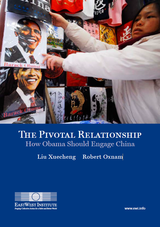
The Pivotal Relationship: How Obama Should Engage China
EastWest Institute
Providing their respective hopes and expectations on what they would like to see in the Obama administration’s China policy are Liu Xuecheng and Robert Oxnam, who both envision opportunities for reframing the China-U.S. relationship in a way that...
Reports
01.07.09
Taiwan-U.S. Relations: Recent Developments and Their Policy Implications
Peony Lui
Congressional Research Service
U.S.-Taiwan relations have undergone important changes, sparked in part by the increasing complexity of Taiwan’s democratic political environment and the continued insistence of Beijing that the separately ruled Taiwan is a part of the People’s...
Reports
01.01.09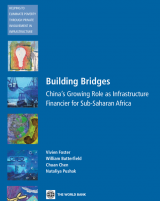
Building Bridges: China’s Growing Role as Infrastructure Financier for Sub-Saharan Africa
World Bank
Over the last decade Chinese investment in Africa has grown considerably. This includes the financing of large infrastructural projects in many African countries. Although Chinese finance of African infrastructure is important, there is not much...
Reports
01.01.09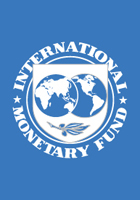
Yen Bloc or Yuan Bloc: An Analysis of Currency Arrangements in East Asia
Sara Segal-Williams
International Monetary Fund (IMF)
This paper examines the role of Japan against that of China in the exchange rate regime in East Asia in light of growing interest in forming a currency union in the region. The analysis suggests that currency unions with China tend to generate...
Reports
12.19.08
Sino-Japanese Relations: Issues for U.S. Policy
Peony Lui
Congressional Research Service
After a period of diplomatic rancor earlier this decade, Japan and China have demonstrably improved their bilateral relationship. The emerging detente includes breakthrough agreements on territorial disputes, various high-level exchanges, and...
Reports
12.01.08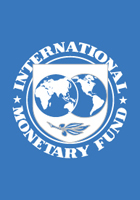
The Macroeconomic Impact of Healthcare Financing Alternatives: Reform Options for Hong Kong SAR
International Monetary Fund (IMF)
With much healthcare publicly funded, Hong Kong's rapidly aging population will significantly raise fiscal pressure over coming decades. The authors ask what the implications are of meeting these costs by public funding, or private funding...
Reports
12.01.08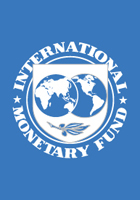
The Impact of Introducing a Minimum Wage on Business Cycle Volatility: A Structural Analysis for Hong Kong SAR
Sara Segal-Williams
International Monetary Fund (IMF)
We study the impact of a minimum wage on business cycle volatility, depending upon its coverage and adjustment mechanism. As with other small open economies, Hong Kong SAR is vulnerable to external shocks, with its exchange rate regime precluding...
Reports
12.01.08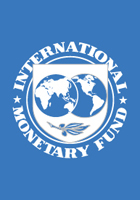
Hong Kong SAR Economic Integration With the Pearl River Delta
International Monetary Fund (IMF)
Hong Kong SAR's economic integration with the Mainland has primarily taken place in the Pearl River Delta (PRD). Taking stock of integration trends, this paper discusses key implications for ensuring economic benefits of further integration are...
Reports
10.08.08
U.S. Foreign Aid to East and South Asia: Selected Recipients
Peony Lui
Congressional Research Service
Since the war on terrorism began in 2001 and the Millennium Challenge Account (MCA) and Global HIV/AIDS Initiative (GHAI) were launched in 2004, the United States has increased foreign aid spending dramatically in some regions, including East and...
Reports
09.17.08
Taiwan: Overall Developments and Policy Issues in the 109th Congress
Peony Lui
Congressional Research Service
U.S. officials saw relations with Taiwan as especially troubled during the 109th Congress in 2005-2006, beset by the increasing complexity and unpredictability of Taiwan’s democratic political environment as well as by PRC actions underscoring...
Reports
09.01.08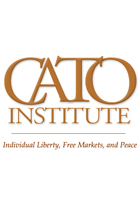
Creating Financial Harmony: Lessons for China
Cato Institute
The current turmoil in global financial markets, which began with the American subprime crisis in 2007, has put market liberalism in a bad light.
But it was the socialization of risk—not private free markets—that precipitated the crisis. This...
Reports
08.24.08
Energy Interests and Alliances: China, America and Africa
EastWest Institute
According to conventional wisdom, the United States and China are locked in a high-stakes competition for energy resources around the world, particularly in Africa. Against the backdrop of highly volatile oil prices, mounting concerns about global...
Reports
07.21.08
China’s “Hot Money” Problems
Peony Lui
Congressional Research Service
China has experienced a sharp rise in the inflow of so-called “hot money,” foreign capital entering the country supposedly seeking short-term profits, especially in 2008. Chinese estimates of the amount of “hot money” in China vary from $500 billion...
Reports
06.30.08
Tibet: Problems, Prospects, and U.S. Policy
Peony Lui
Congressional Research Service
On March 10, 2008, a series of demonstrations began in Lhasa and other Tibetan regions of China to mark the 49th anniversary of an unsuccessful Tibetan uprising against Chinese rule in 1959. The demonstrations appeared to begin peacefully with small...
Reports
06.01.08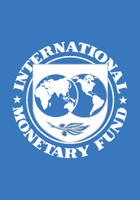
Why Are Saving Rates of Urban Households in China Rising?
International Monetary Fund (IMF)
From 1995 to 2005, the average urban household saving rate in China rose by 7 percentage points, to ¼ of disposable income. The authors use household-level data to explain the postponing of consumption despite rapid income growth. Saving rates have...



